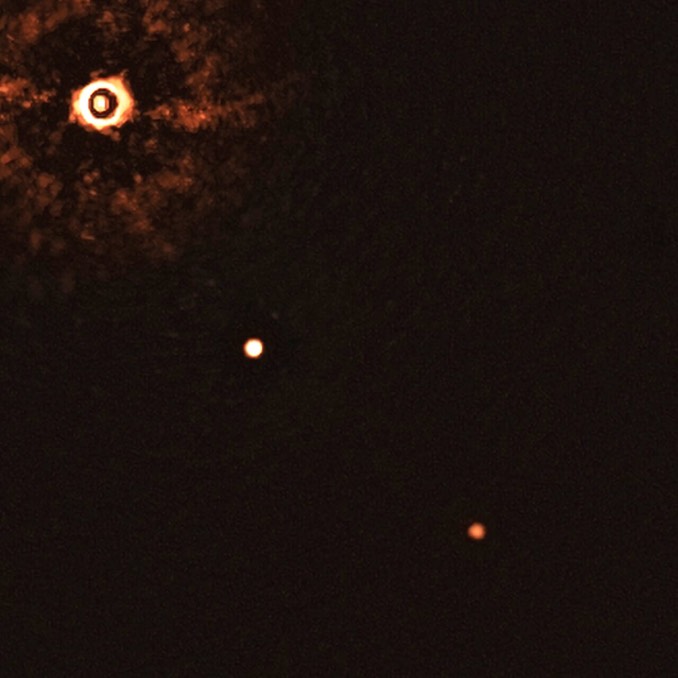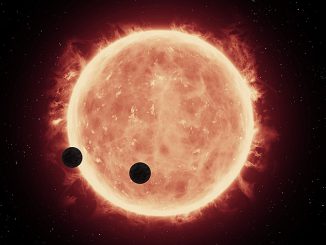
For the first time, astronomers have captured an image of two giant exoplanets orbiting a young Sun-like star 300 light years from Earth. Direct images of exoplanets are rare and researchers have never before observed more than one planet orbiting a star similar to the Sun.
“This discovery is a snapshot of an environment that is very similar to our solar system, but at a much earlier stage of its evolution,” said Alexander Bohn, a Ph.D. student at Leiden University in the Netherlands and lead author of a paper in The Astrophysical Journal Letters.
The exoplanets in question orbit a young star known as TYC 8998-760-1 in the southern constellation Musca (the Fly). The star is similar to the Sun very early in its evolution but the two planets in question are very different from the gas giants in Earth’s solar system.
The inner planet is 14 times more massive than Jupiter and orbits 160 times farther from its star than the distance between Sun and Earth. The outer planet has six times the mass of Jupiter and is located 320 astronomical units from the star. They were imaged by the SPHERE instrument on the European Southern Observatory’s Very Large Telescope in Chile using a coronagraph to block out the light from the host star.
“Even though astronomers have indirectly detected thousands of planets in our galaxy, only a tiny fraction of these exoplanets have been directly imaged,” said co-author Matthew Kenworthy, an associate professor at Leiden University. “Direct observations are important in the search for environments that can support life.”
Once operational, ESO’s Extremely Large Telescope will provide a more detailed look at the system, allowing researchers to determine if the gas giant exoplanets formed in their current locations or migrated there from elsewhere.
“The possibility that future instruments, such as those available on the ELT, will be able to detect even lower-mass planets around this star marks an important milestone in understanding multi-planet systems,” Bohn said, “with potential implications for the history of our own Solar System.”



